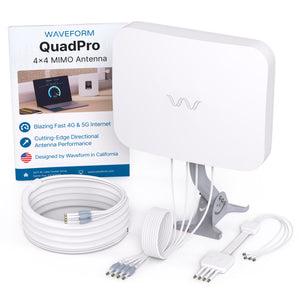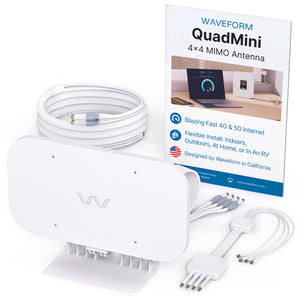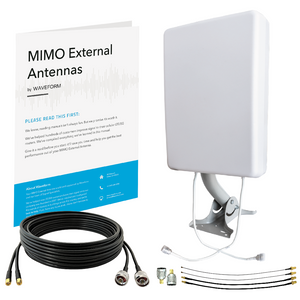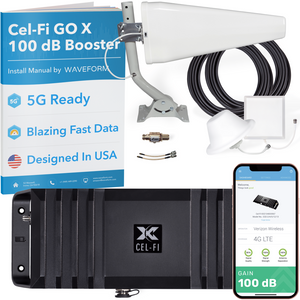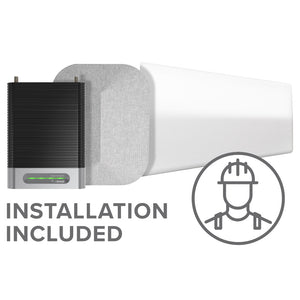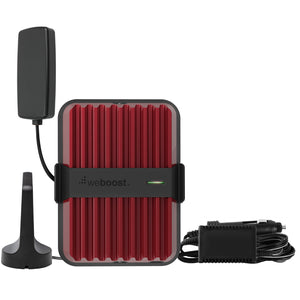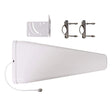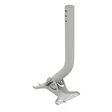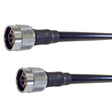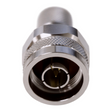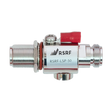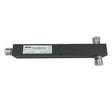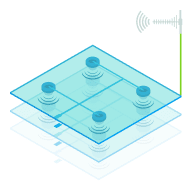
A wireless wifi mesh network is a system of multiple nodes that communicate with each other to create one reliable wifi network you can connect to anywhere in your home. If your wifi reliability or speed drops as soon as you move a couple of rooms away from your router, a wifi mesh network could be the solution you need.
This article will help you understand exactly when a wireless mesh router makes sense, explain the differences between available models, and guide you in picking the right mesh network for your home.
Why is mesh networking important?
One of the biggest changes of the past decade is that wifi devices in your home aren’t just limited to your smartphone and your laptop any more. Everything from your alarm clock to your baby monitor to your stereo to your games console to your alarm system is wifi enabled, and that means you need wifi coverage everywhere. Just the living room won’t cut it any more when your refrigerator wants to tell you what the weather’s like this morning.
Why won’t my wifi signal penetrate on its own?
It depends on a lot of factors. Your property may be too big - most routers will reach about 100 feet in optimum conditions. Your property might not have optimum conditions. Wall materials like brick and stone (usually found in older houses) and metal and concrete (usually found in newer houses) can block or weaken signal. Signal can also be blocked by pipes and large appliances. It’s not just the walls either - floor and ceiling construction will also effect wifi signal on multiple stories.
Signal speed will often drop off significantly as you move room by room, further from your router. You may get 500 mbps in the same room as the router, but by the time you’ve gone up two flights of stairs and moved to the other side of the house, your speed could be 100 mbps and your whole connection could be unreliable. This is particularly a problem for basements - if you’ve got a games console down there, or a TV for streaming movies, you really need the fast internet speeds your service provider promised. But getting signal underground can be really tough - and moving your router down there would just make signal upstairs challenging!
What are my options if my wifi signal doesn’t cover my whole house?
Check out our previous guide to wifi repeaters/extenders. We explain how they work and review some of the most popular models. Mesh networking is an increasing popular alternative to extenders.
When don’t I need a mesh network?
Mesh networks only make sense at the moment if you’re trying to cover a space larger than 1,000 sq ft. If your home or apartment is smaller than that, you should be fine with a high-quality router. Our guide to wifi extenders recommends the Archer C9 AC1900 Router from TP-LINK which offers 802.11ac, the next generation of WiFi. It’s a really fast dual band router with ultrafast dual core processors.
If you already have a top quality router, another thing to try is just repositioning it. As we mentioned above, building materials and even large home appliances like refrigerators can block wifi signal. If you can move your route to a more central location, you may be able to eliminate dead zones. Experiment with your router placement before splashing out on a mesh network.
Are all mesh networks intercompatible?
No. At the moment there’s no industry standard to determine exactly what a mesh network is or isn’t, and some devices work very differently to others. We’ve explained some of the most popular and effective options below:
Reviews
Eero

At the moment, we think the Eero is the best choice for most people’s needs. Eero uses multiple nodes or access points to create a mesh network that will cover your entire home. You plug one Eero into your modem (just like a router), and the other Eero units can just be plugged in to a standard outlet. The standard pack comes with three Eeros, but you can add more units if you have a very large space (one Eero per 1,000 feet is recommended), and the units should be spaced at least 40 feet apart. The units can be set up and paired to each other very quickly using the dedicated app, and will instantly create an incredibly fast wireless mesh network in your home.
The Eero app offers a lot of network-management options. You can set scheduled “bedtimes” to lock down WiFi access. It’s also very simple to set up a guest network for visitors, and you can share the login info directly to a guest’s phone or laptop.
Orbi
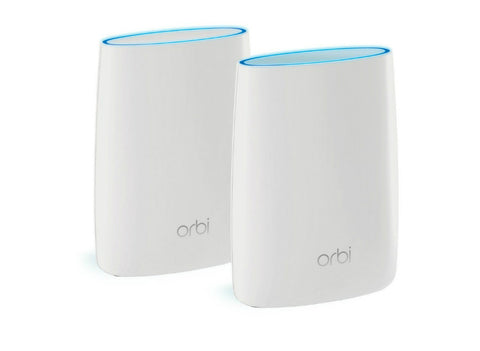
The Netgear Orbi has two units, each of which is a tri-band router. It’s a very fast and powerful system - one of the two 5GHz bands is dedicated to communication between the two units, leaving the 2.4GHz band and the other 5GHz band free to keep wifi speeds high. Setup is extremely simple - you just plug the main unit in to your modem, and plug the secondary unit into a standard outlet wherever you need additional coverage. The system will configure itself automatically.
Most review sites recommend the Orbi as a first choice, and the impressive high-bandwidth backhaul (which is, so far, unique to the Orbi) is the main reason why. It’s definitely a great feature. But for us, the Eero just edges it for a handful of reasons. The first is that in our personal testing, we had some issues with the Orbi connecting to our phones properly. The second is that we think that the Eero’s three units as standard makes more sense for most consumers - it means that you can put a unit in your basement, and another one in an upstairs bedroom, or a garage, and be confident that the house is really going to be fully covered. The final reason is that we think the Eero’s smaller, sleeker design is more attractive. That’s important not just from an aesthetic point of view, but also because a smaller, more discreet device is more likely to be placed out in the open, and so broadcast wifi signal better (rather than being hidden in a cabinet or behind a TV or speakers).
Plume

The Plume is a very different type of wireless mesh network. Instead of two or three router-like units, the Plume consists of multiple miniature pods (it’s sold as a pack of six, and more can be added). Each unit covers one room and plugs into a wall outlet. They are so small they don’t even block the neighboring outlet. The pods’ cloud software forms a mesh network tailored to your home and devices. You don’t need to worry about placement, just plug a pod into every room you want coverage in, and the optimizing software does the rest.
Plume is incredibly discreet. If you don’t like the look of the larger router-style units, Plume is a fantastic choice. It’s also great for supporting multiple devices. If your house is full of smartphones, iPads, games consoles, several smart TVs and a wifi-enabled refridgerator, Plume is a mesh network that can support all of that.
Where it falls down, is speeds. The speed is totally fine for gaming or streaming movies, but Plume is not as fast as networks like the Eero or Orbi, and if your priority is transferring huge files, you’ll probably prefer one of those options.
Ubiquiti Unifi
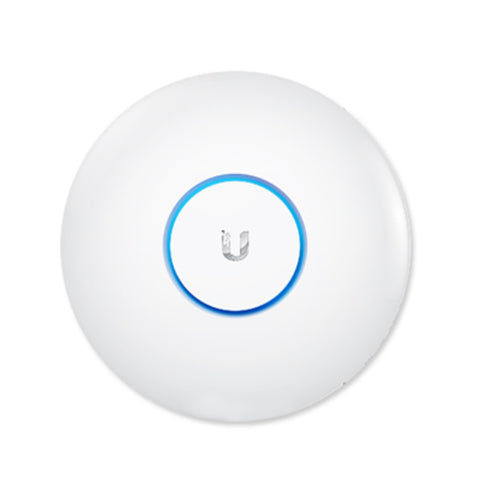
The final type of mesh network solution is the enterprise-grade (yet still affordable) Unifi system by Ubiquiti.
To use Unifi, your house needs to be wired for Ethernet. The Access Points (APs) connect to an Ethernet port and broadcast a wifi signal. You still need a router and modem. You also need to download and install the Ubiquiti Unifi application for setup. It’s available for PC, Mac, and Linux, and there’s also a Unifi Easy Setup app for Android.
The APs are designed to be ceiling-mounted, but you can place them on a shelf or in a cupboard.
The Unifi Controller app is both the system’s great strength and strongest weakness, depending on your skill with managing a complex wifi network, and your desire to do so in the first place. The Unifi system offers enterprise-level network functionality at home mesh network prices. It can be configured to set up guest passes, limit bandwidth or access times for children, and assign wifi frequencies manually.
Ubiquiti’s Unifi is extremely fast and extremely reliable, but it demands a level of expertise and commitment to set up and make the most of the impressive functionality. If you just want faster, reliable wifi in your basement, you may not want or need to spend the time custom-designing your own home mesh network settings, and the straightforward setup procedure of the Eero or Plume in particular may be more appealing.
Other three-unit options:
Velop
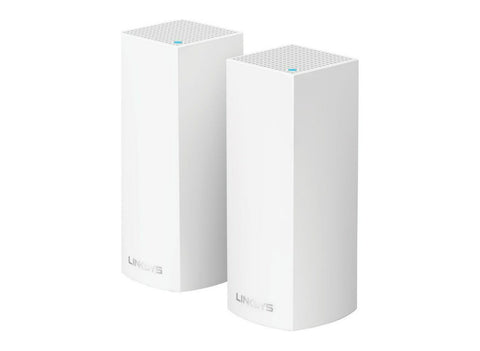
The Velop mesh system by Linksys is another three-unit option. The units are tri-band, like the Orbi, but do not have a dedicated wireless backhaul. It’s a bit more expensive than the Orbi, but it’s a good option if you want the faster speeds with three units, not two.
Luma
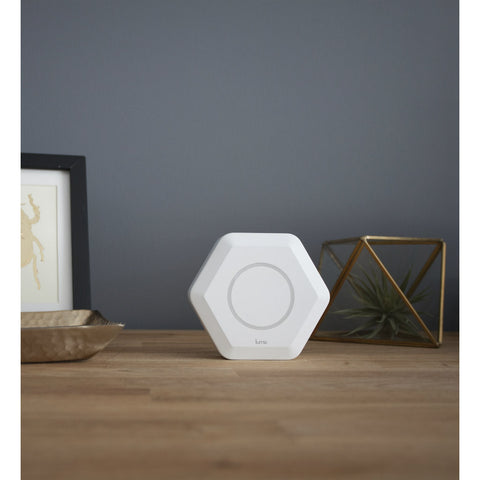
The Luma is another three-unit mesh network option. The hexagonal units should be positioned upright. The Luma is bit less reliable than some competitors. Setup is a bit more complicated, and the range is shorter and speeds are slower than units like the Eero. On the other hand, the Luma has really great family-friendly filters. They allow parents to limit content to G-rated child-friendly sites, and limit individual user access and bandwidth allowances. You can even set “bedtime” schedules.
Google Wifi

Google’s mesh network system is the three-unit Google Wifi. It’s very straightforward to set up, and it’s much more affordable than many competitors - almost $200 less than the Eero and $100 less than the Luma. It’s fast, but not quite as fast as the Eero. It does come with a lot of extra smart-home functionality. You can control Nest thermostats, Phillips Hue lights, and there’s also a Family Pause feature that allows you to pause access for particular devices.
Summary
Wifi mesh networks are a great potential solution to limited home coverage. At the moment, we think the Eero delivers the best combination of reliability and ease of use, but there are a range of options for every home situation and the last couple of years has seen an explosion of options available. If you have a large home and difficulty getting wifi coverage in some parts of it, a mesh network is probably a great solution.
Other related guides:























